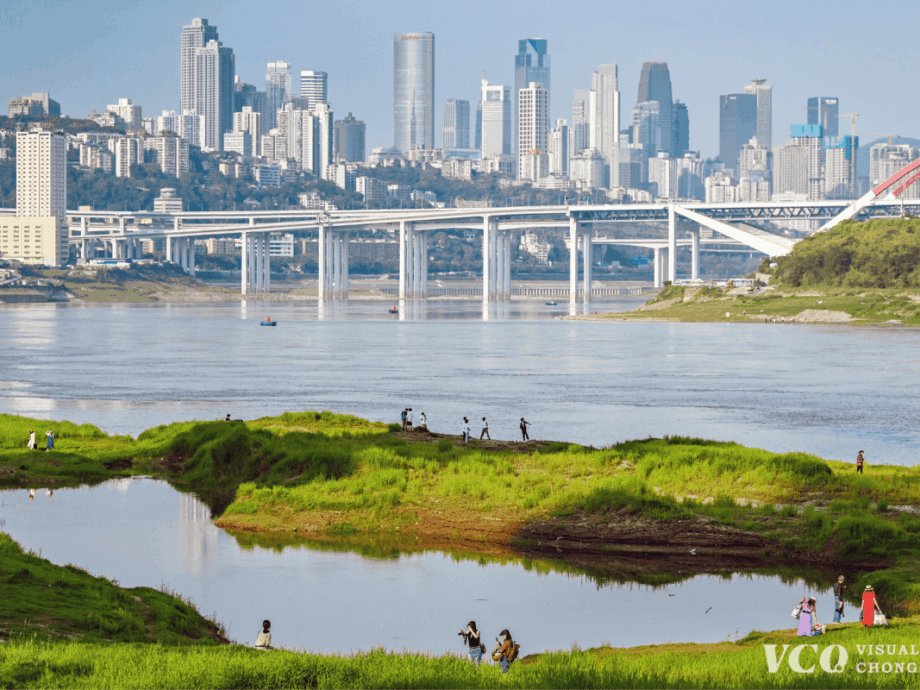China’s New River Protection Guidelines: Ambition, Urgency, and a Vision for 2035
China has unveiled a sweeping set of guidelines and action plans aimed at transforming the management, protection, and restoration of its rivers and lakes. These measures, released by the Communist Party of China Central Committee and the State Council, set out a vision for significant improvements in flood prevention, water resource efficiency, ecological health, and public engagement by 2035. The new policies mark a pivotal moment in China’s environmental governance, reflecting both the urgency of the country’s water challenges and its ambition to lead in ecological restoration and sustainable development.
- China’s New River Protection Guidelines: Ambition, Urgency, and a Vision for 2035
- What Are the Key Goals and Measures in the 2025-2035 Guidelines?
- Flood Control: Engineering Meets Ecosystem Management
- Water Conservation and the Push for a Water-Saving Society
- Ecological Restoration: From “Rivers with Flowing Water” to “Rivers with Fish and Aquatic Plants”
- Governance Innovations: The River Chief System and Collaborative Management
- Science, Technology, and Innovation: The Role of Digital Tools and Robotics
- Challenges and Broader Implications: Balancing Development, Environment, and Social Stability
- In Summary
With over 1.8 million square kilometers of land covered by river basins—including the Yangtze, Yellow, Pearl, Songhua, Huai, Hai, and Liao Rivers—China’s water systems are vital to its economic, social, and ecological well-being. Yet, decades of rapid industrialization, urbanization, and climate change have left many rivers degraded, polluted, and vulnerable to extreme weather events. The new guidelines represent a comprehensive response, integrating engineering, policy, technology, and community action to secure the future of China’s waterways.
What Are the Key Goals and Measures in the 2025-2035 Guidelines?
The guidelines and associated action plans set out a multi-faceted approach to river and lake protection, with clear targets and timelines:
- Flood Prevention and Disaster Reduction: By 2035, China aims to modernize its flood control systems, integrating reservoirs, river channels, levees, and flood retention areas. The approach emphasizes both engineering solutions and non-engineering measures, such as improved weather forecasting, early warning systems, and disaster response capabilities.
- Water Resource Efficiency: The guidelines call for a “water-conserving society,” promoting efficient agricultural irrigation, industrial water recycling, and the reuse of unconventional water sources. Scientific allocation of water resources across river basins and the establishment of strategic water reserves are central to this goal.
- Ecological Restoration: The action plan for 2025-2027, jointly released by the Ministry of Ecology and Environment and other agencies, focuses on restoring aquatic ecosystems, protecting biodiversity, and ensuring stable water flows. By 2030, notable progress is expected, with full implementation by 2035.
- Drinking Water Protection: Strengthening the protection of drinking water sources is a priority, with measures to control pollution, monitor water quality, and safeguard public health.
- Public Participation and Social Supervision: The guidelines encourage public involvement, social capital investment, and third-party pollution treatment, recognizing that lasting change requires broad societal engagement.
These measures are underpinned by a commitment to science-based management, technological innovation, and coordinated action across government departments, local authorities, and the private sector.
Flood Control: Engineering Meets Ecosystem Management
Flooding has long been a major threat in China, with devastating consequences for communities, agriculture, and infrastructure. The new guidelines propose a “synergy between river basins and regions,” coordinating flood control efforts across main and tributary rivers. This includes:
- Systematic assessment of flood risk areas to guide urban planning, industrial development, and infrastructure construction.
- Relocation of populations and industries from high-risk flood zones to safer areas.
- Allocation of space for flood discharge and retention within city development plans.
- Introduction of flood insurance systems in high-risk areas to enhance resilience.
Importantly, the guidelines recognize the need to balance engineering solutions—such as dams and levees—with ecological approaches that restore natural floodplains, wetlands, and river connectivity. This integrated strategy aims to reduce disaster risk while supporting healthy river ecosystems.
Water Conservation and the Push for a Water-Saving Society
China’s per capita water availability is only about 25% of the global average, and over 400 cities face water shortages. The guidelines respond to this crisis by promoting:
- Efficient irrigation in agriculture, which remains the largest consumer of water.
- Recycling and reuse of industrial water, reducing demand on freshwater sources.
- Scientific allocation of water resources, ensuring that ecological needs are met alongside human and economic demands.
- Public education campaigns to foster water-saving habits in households and businesses.
By 2025, the goal is to eliminate surface water below Grade V quality (the worst classification) and raise the proportion of “fairly good quality” surface water (Grade III or above) to at least 85%. These targets are supported by the expansion of water quality monitoring, stricter pollution controls, and incentives for water-efficient technologies.
Ecological Restoration: From “Rivers with Flowing Water” to “Rivers with Fish and Aquatic Plants”
The action plan for 2025-2027 introduces the concept of “beautiful rivers and lakes,” defined by stable water sources, good flow, restored ecological functions, and protected biodiversity. Key measures include:
- Restoring buffer zones and wetlands to support native species and improve water quality.
- Controlling pollutant discharge and enhancing water quality through targeted interventions.
- Establishing ecological protection compensation mechanisms, particularly in the Yangtze and Yellow River basins.
- Launching pilot programs for aquatic ecology assessment, with early successes in the Yangtze and Yellow River basins.
By 2027, improvements in aquatic biological integrity and biodiversity are expected, with the aim of curbing the decline of endangered species and restoring ecosystem functions. The plan covers 2,573 water bodies, including over 6,300 kilometers of the Yangtze River and 5,400 kilometers of the Yellow River, as well as key lakes and reservoirs.
Protecting the Yangtze Finless Porpoise: A Case Study in Species Conservation
One of the most iconic beneficiaries of these efforts is the critically endangered Yangtze finless porpoise. Upgraded to national first-level protected status, the species is now the focus of intensified conservation actions, including habitat restoration, fishing bans in key tributaries, and public awareness campaigns. WWF and other organizations are working with authorities to double the wild population by 2030, demonstrating the potential for targeted policies to reverse biodiversity loss.
Governance Innovations: The River Chief System and Collaborative Management
China’s approach to river governance has evolved to address the complexity of water management across vast and diverse regions. A notable innovation is the “River Chief System” (RCS), which appoints government officials at various levels as accountable leaders for specific rivers and lakes. Under this system:
- River chiefs are responsible for water quality, pollution control, ecosystem restoration, and regulatory enforcement within their jurisdictions.
- Performance is closely monitored and linked to official evaluations, creating strong incentives for results.
- Public reporting mechanisms, such as notice boards with contact information, enable community oversight and rapid response to problems.
The RCS has been credited with significant improvements in water quality, particularly in wealthier regions with greater resources. However, disparities remain, with less developed areas facing challenges in funding and capacity. The system’s success depends on sustained investment, cross-departmental coordination, and the ability to adapt to local conditions.
Collaborative Governance in the Yangtze River Basin
The Yangtze River Basin, spanning 11 provinces and multiple administrative regions, exemplifies the need for collaborative governance. Research highlights the importance of:
- Legal and institutional frameworks that encourage cooperation across provincial boundaries.
- Technological tools, such as digital platforms and real-time monitoring, to facilitate information sharing and joint action.
- Building trust, shared perceptions of environmental risks, and effective communication among stakeholders.
Three main pathways to effective collaboration have been identified: technology-driven relationships, institutionally reinforced interaction, and the synergy of internal and external factors. These models offer valuable lessons for other transboundary river systems facing similar challenges.
Science, Technology, and Innovation: The Role of Digital Tools and Robotics
Technological innovation is central to China’s river protection strategy. Recent advances include:
- Bionic Robotic Fish: Developed by Wuhan University, these intelligent underwater robots mimic real fish, collecting ecological data and monitoring water quality in the Yangtze River. Equipped with obstacle sensors and AI learning capabilities, they represent a new frontier in environmental monitoring and research.
- Big Data and AI: Digital platforms enable real-time tracking of water quality, pollution sources, and ecosystem health, supporting rapid decision-making and targeted interventions.
- Hydroengineering and Renewable Energy: Large-scale projects, such as hydropower dams, are being balanced with ecological considerations, while the integration of renewables and smart grids supports broader sustainability goals.
Central and local governments are investing in research, innovation, and technology transfer, with mechanisms to encourage private sector participation and third-party service provision.
Challenges and Broader Implications: Balancing Development, Environment, and Social Stability
Despite notable progress, China’s river protection efforts face significant challenges:
- Regional Disparities: Wealthier provinces can invest more in water treatment and infrastructure, while poorer regions struggle with limited budgets and capacity.
- Debt and Economic Pressures: The cost of environmental governance can strain local finances, especially amid broader economic slowdowns and reduced revenues.
- Climate Change: Increasingly unpredictable rainfall, droughts, and extreme weather events complicate water management and heighten the risk of disasters.
- Public Trust and Social Stability: Water quality and availability are closely linked to public confidence in government. Failures in water management can trigger social unrest, as seen in past protests over pollution and resource allocation.
Internationally, China’s approach to river protection is under scrutiny, especially in the context of its overseas investments and the environmental performance of Chinese companies abroad. Incidents such as the Chambishi toxic spill in Zambia highlight the need for robust regulatory frameworks, corporate accountability, and transparent monitoring—both at home and in global partnerships.
In Summary
- China’s new river protection guidelines set ambitious targets for flood prevention, water conservation, and ecological restoration by 2035.
- The approach integrates engineering, policy, technology, and public participation, with a focus on both human and ecological needs.
- Innovations such as the River Chief System and bionic robotic fish exemplify China’s commitment to governance and scientific advancement.
- Challenges remain, including regional disparities, economic pressures, and the impacts of climate change.
- Success will depend on sustained investment, cross-sector collaboration, and the ability to balance development with environmental stewardship.
- China’s experience offers valuable lessons for other countries facing similar water management challenges, underscoring the global significance of effective river governance.












